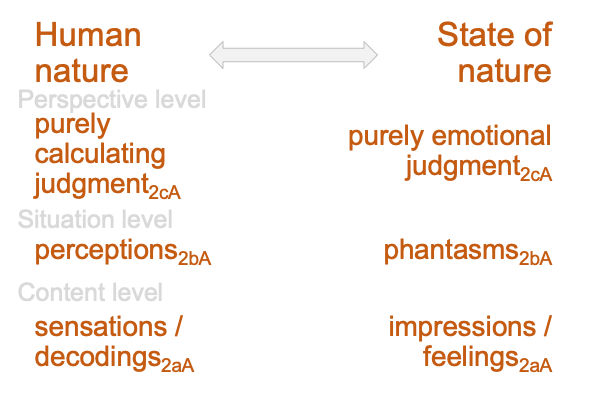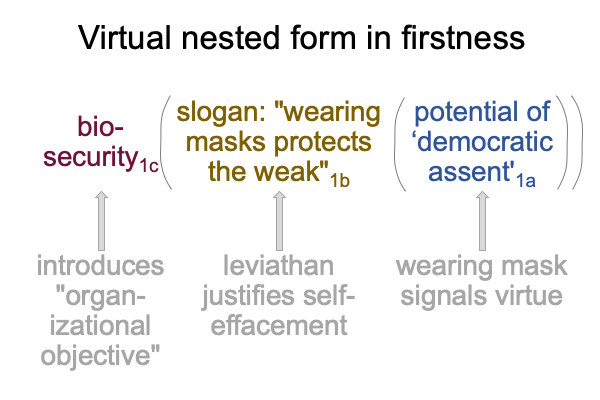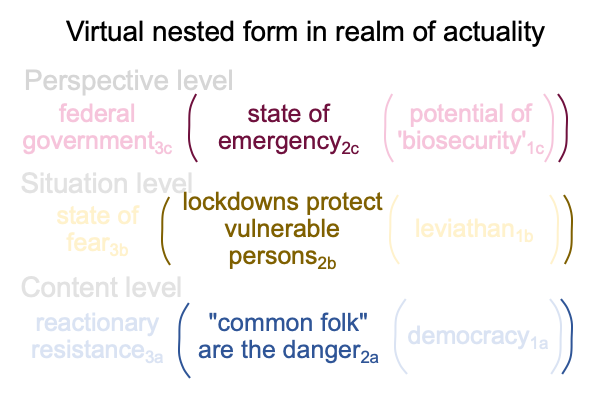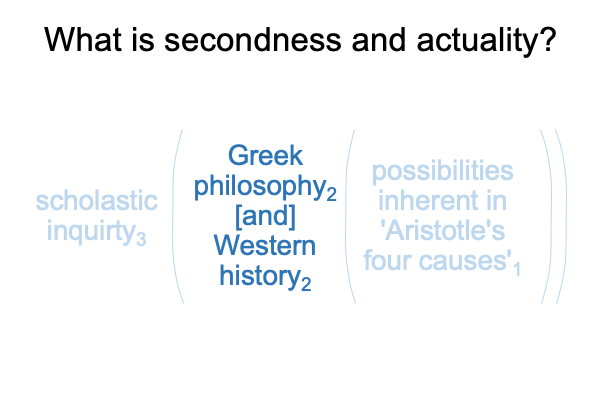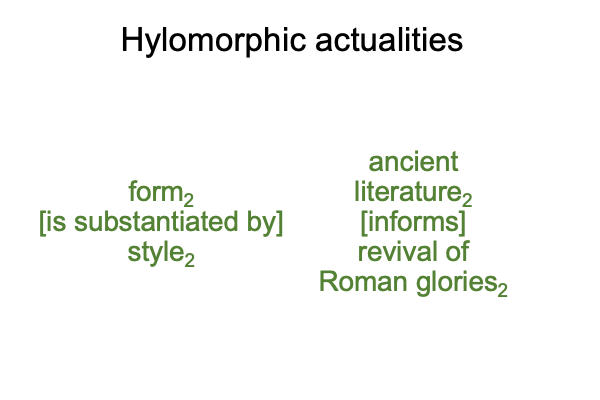Looking at Matthew Crawford’s Essay (2022) “Covid Was Liberalism’s Endgame” (Part 6 of 10)
0029 What does it mean to unravel a mystery?
The intersection unravels into a resolution, where one nested form emerges from (and situates) the other. A two-level interscope results. One nested form goes into the content level. The other occupies the situation level. The two-level interscope is discussed in A Primer on Sensible on Social Construction, by Razie Mah, available at smashwords and other e-book venues.
0030 Say what?
To start, what would produce the conditions where a mystery resolves into a heresy?
The intersection2 is the union of two actualities2, so it2 should enter the slot for actuality2 in a nested form. So if the normal context3 shifts, then the internal dynamics of the actuality2 may change.
Crawford suggests that the recent political response to the novel coronavirus completes a historic transition, from modern liberalism3 to hypermodern (some would say, “postmodern”) technocratic progressivism3.
0031 Here is a picture.
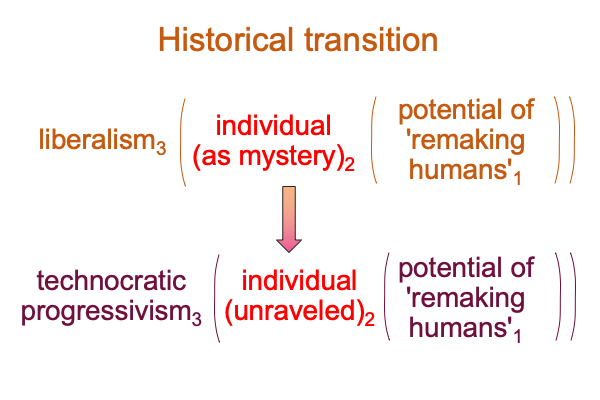
0032 In liberalism3, the goal is to move the mystery2, in a spiritual sort of way, by exploiting democracy’s and leviathan’s abilities to remake humans1. Appeal to the people’s commonsense. Set limits to what is acceptable. Offer inspiration. Apply peer-pressure. Certainly, liberals think that they are smarter (or better, more enlightened) than other citizens. But, they respect the wisdom of tradition, particularly the Christian tradition. Indeed, liberalism3 seeks to practically implement the Christian vision in a fallen world, by calling the individual to be reasonable and by cajoling individuals to recognize their weaknesses.
0033 In technocratic progressivism3b the goal is to move vulnerable persons2b, in an efficient sort of way, by using the leviathan1b to situate the impulses of human nature3a. Insist that commonsense2a is defined by technocratic calculations1b. Frame every challenge as a fear-inducing crisis. Offer scientific and technical explanations, using terminology that confounds the literal meanings of words. Insist that alternate policies have dire consequences. Label the opposition, “malevolent”.
0034 The result is a new relational structure, “the unraveled individual”, which casts a shadow upon the originating mystery.

Vulnerable persons2b virtually emerge from (and situate) commonsense2a.A mystery unwinds into a heresy.


